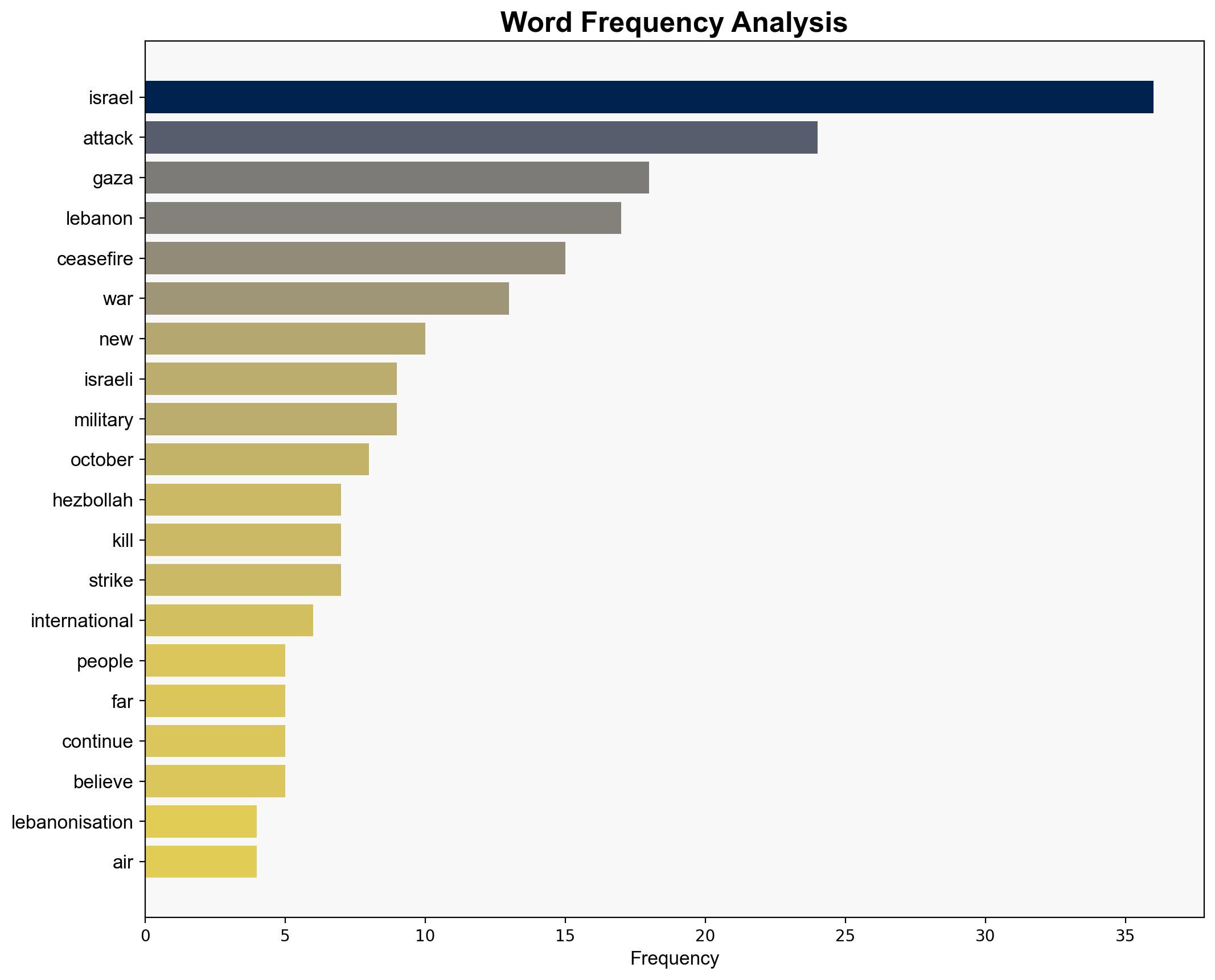How Israel is using no war no peace Lebanonisation model in Gaza – Al Jazeera English
Published on: 2025-11-04
Intelligence Report: How Israel is using no war no peace Lebanonisation model in Gaza – Al Jazeera English
1. BLUF (Bottom Line Up Front)
The most supported hypothesis is that Israel is employing a “Lebanonisation” strategy in Gaza, characterized by maintaining a state of controlled conflict without full-scale war or peace. This approach allows Israel to manage security threats while avoiding international pressure for a comprehensive resolution. Confidence level: Moderate. Recommended action: Monitor developments for shifts in Israeli strategy and prepare for potential escalation scenarios.
2. Competing Hypotheses
1. **Hypothesis A**: Israel is intentionally applying a “Lebanonisation” strategy in Gaza to maintain a controlled conflict environment, similar to its historical approach in Lebanon. This allows Israel to conduct periodic military operations to manage threats without engaging in full-scale war or peace negotiations.
2. **Hypothesis B**: Israel’s actions in Gaza are reactive and not part of a deliberate strategy. The ongoing conflict is driven by immediate security concerns and the need to respond to provocations from groups like Hamas, rather than a calculated long-term strategy.
3. Key Assumptions and Red Flags
– **Assumptions**:
– Hypothesis A assumes Israel has a coherent long-term strategy that mirrors its Lebanon policy.
– Hypothesis B assumes Israel’s military actions are primarily reactive and lack strategic depth.
– **Red Flags**:
– Lack of explicit Israeli policy statements confirming a “Lebanonisation” strategy.
– Potential bias in source material, as it may reflect a particular geopolitical perspective.
– **Missing Data**:
– Detailed Israeli military and political strategy documents.
– Independent verification of the strategic intent behind Israeli actions.
4. Implications and Strategic Risks
– **Patterns**: Continued Israeli strikes in Gaza may lead to periodic escalations, increasing regional instability.
– **Cascading Threats**: Potential for broader conflict involving other regional actors, such as Hezbollah or Iranian proxies.
– **Economic Impact**: Prolonged conflict could further destabilize Gaza’s economy, exacerbating humanitarian issues.
– **Geopolitical Risks**: International condemnation could isolate Israel diplomatically, affecting its global alliances.
5. Recommendations and Outlook
- Enhance intelligence gathering on Israeli military and political strategy to better understand intentions.
- Engage in diplomatic efforts to mediate between Israel and Gaza factions to prevent escalation.
- Scenario Projections:
– **Best Case**: De-escalation through international mediation leading to a temporary ceasefire.
– **Worst Case**: Full-scale conflict involving regional actors, leading to significant casualties and regional destabilization.
– **Most Likely**: Continued low-intensity conflict with periodic escalations.
6. Key Individuals and Entities
– Benjamin Netanyahu
– Hassan Nasrallah
– Rob Geist Pinfold
– Abbas Fakih
7. Thematic Tags
national security threats, regional focus, conflict management, military strategy





